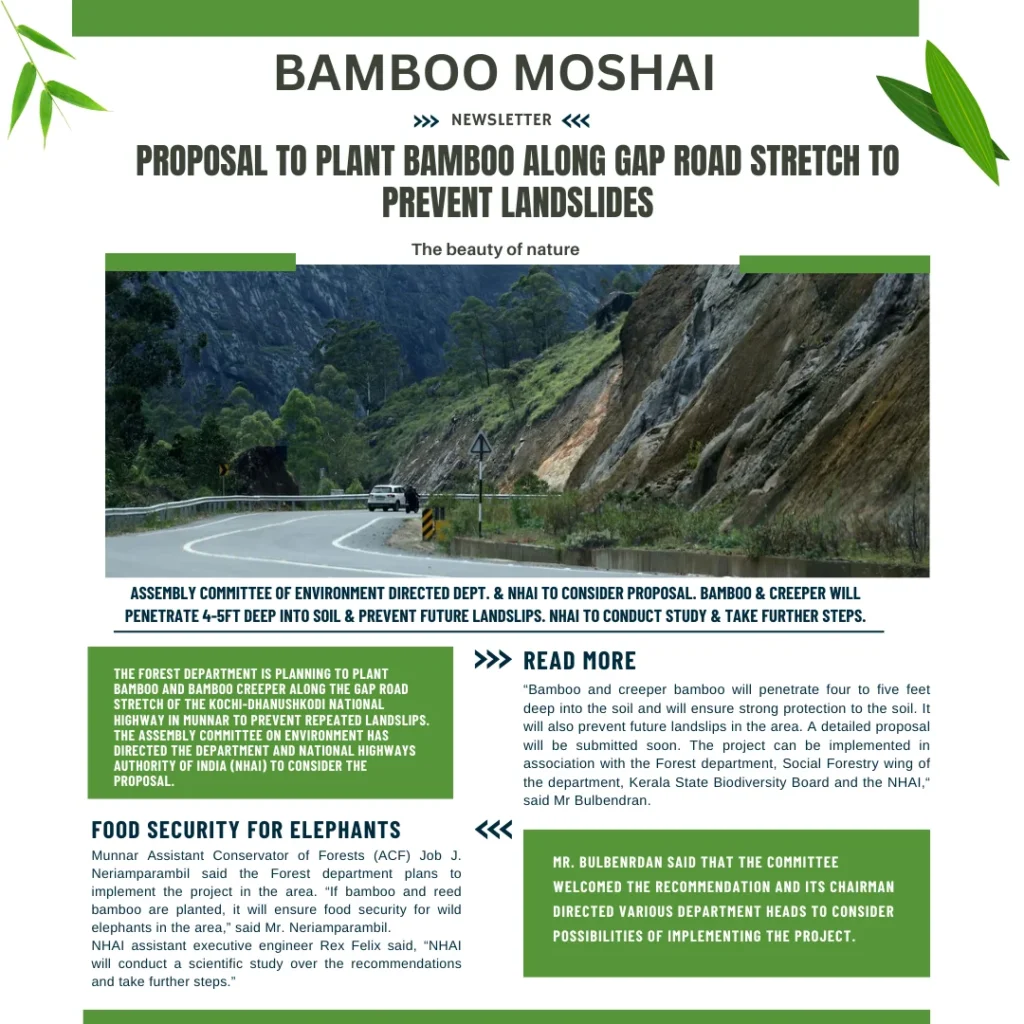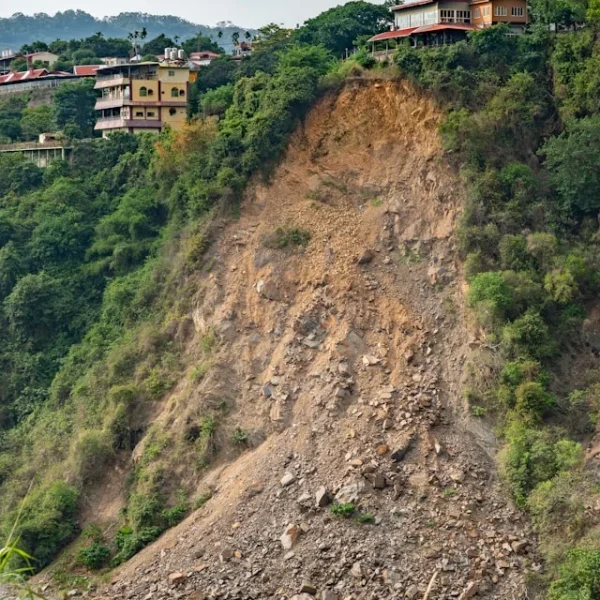Landslides have been a persistent threat to the Gap Road stretch, posing significant risks to both human life and property. In a promising development, the Assembly Committee on Environment has directed the concerned departments and the National Highways Authority of India (NHAI) to explore a nature-based solution: planting bamboo along the vulnerable areas. This innovative proposal aims to prevent future landslides while simultaneously addressing the food security concerns of elephants in the region.
The Problem: Landslides on Gap Road
Gap Road, notorious for its susceptibility to landslides, has been a cause for concern for years. The road’s location, coupled with the region’s geological conditions, makes it particularly vulnerable to soil erosion and slope instability. Landslides on this stretch have led to loss of life, property damage, and disruptions in transportation, impacting the lives of countless people.
The Bamboo Solution: A Green Shield
The proposed plan to plant bamboo along the Gap Road stretch is a commendable step towards mitigating the landslide risk. Bamboo, known for its robust root system, has the potential to reinforce the soil and prevent erosion. The deep penetration of bamboo roots into the soil can significantly enhance the soil’s stability, acting as a natural barrier against landslides.
Moreover, the initiative extends beyond landslide prevention. By introducing bamboo and reed bamboo, the project aims to create a sustainable food source for elephants in the region. This dual benefit underscores the holistic approach of the proposal.
A Collaborative Effort
The successful implementation of this project requires a collaborative effort involving multiple stakeholders. The Forest Department, with its expertise in ecology and wildlife conservation, will play a crucial role in identifying suitable bamboo species and ensuring their proper cultivation. The Social Forestry wing can contribute to the project by providing technical guidance and support. The Kerala State Biodiversity Board’s role will be vital in assessing the environmental impact and ensuring the project aligns with biodiversity conservation goals. NHAI’s involvement is essential for the execution of the project along the road stretch.
Scientific Study and Implementation
Before embarking on a large-scale plantation, NHAI will conduct a comprehensive scientific study to evaluate the feasibility and effectiveness of the bamboo barrier. This study will involve soil analysis, slope stability assessment, and identification of suitable bamboo species. Once the study yields positive results, a detailed project plan will be formulated, outlining the plantation areas, the required quantity of bamboo saplings, and the timeline for implementation.
Benefits Beyond Landslide Prevention
The bamboo plantation project offers several additional benefits:
- Carbon sequestration: Bamboo is known for its exceptional carbon sequestration capabilities, helping to mitigate climate change.
- Biodiversity enhancement: The introduction of bamboo will create a new habitat for various plant and animal species, promoting biodiversity.
- Economic opportunities: Bamboo cultivation can generate employment opportunities for local communities through activities like plantation, harvesting, and processing.
- Eco-tourism potential: The lush green bamboo plantations can be developed as eco-tourism spots, attracting visitors and boosting local economies.
Challenges and Considerations
While the bamboo plantation project holds immense promise, it is essential to address potential challenges and considerations:
- Maintenance: Bamboo requires regular maintenance, including pruning and pest control. A dedicated team will be needed to ensure the long-term sustainability of the plantation.
- Land acquisition: Acquiring sufficient land for the bamboo plantation might pose challenges, especially in densely populated areas.
- Community involvement: Engaging local communities in the project is crucial for its success. Awareness campaigns and capacity-building programs can help foster community ownership.
Conclusion
The proposal to plant bamboo along the Gap Road stretch is a visionary step towards addressing the landslide problem while contributing to ecological restoration and community development. By combining scientific expertise, collaborative efforts, and community participation, this project can become a model for sustainable land management and disaster risk reduction. As the project progresses, it is essential to monitor its impact closely and make necessary adjustments to ensure its long-term success.






